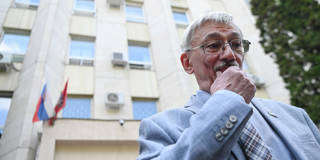Russian Life Imitates Dystopian Art
The state in Russia has always tended toward absolutism, and its coercive and penal arms have rarely wielded as much power as they do now. Since launching his invasion of Ukraine, Russian President Vladimir Putin has combined neo-Stalinism and religious fervor, with all of the absurdities that this entails.

MOSCOW – The Kremlin rarely surprises me. When I read George Orwell’s 1984 in the 1970s, at age 10, I immediately recognized our Soviet life. By then, everyone was used to the state insisting that everything was becoming “better and more joyous,” as Stalin had claimed in 1935 when people were dying of hunger and being imprisoned for fictitious crimes.